Latvia has three UNESCO sites and, if like us, you enjoy exploring what UNESCO has to offer, then you have your road-trip compass points set. In this blog we give you 3 compelling reasons why you must visit Latvia’s Kuldīga. We hope that it will give you enough inspiration to plot it on your itinerary soon and give you a UNESCO tick.
I am so excited to share our experiences at Kildīga, as it has to be one of our favourite Latvian sights, aside of Cēsis in the Guaja National Park. Kuldīga is a charming town in the Kurzene region of the country. Just 2 hours west of capital Rīga and an hour south of ferry port Ventspils, Kuldīga is in prime position for a visit. It is one of those places that when you do you research and look at the images of this classical medieval town, you find yourself immediately drawn to its atmospheric feel. And those images really don’t disappoint when you see it in reality.
Kildīga’s history dates back to 1242 when there was first mention of a settlement that had built up around the confluence of the Venta and Alekšupīte rivers. Through the years, the town grew and attracted people from across the Baltics, resulting in a variety of architectural designs. The minute you drive into the town, this becomes apparent. Wooden clad buildings that look like they are hanging onto life sit alongside impressive churches and castle-like towers, each one offering you a little bit of their very own historical tales.
Built up around their paper mill, matches factory, distillery and brewing, Kuldīga has certainly assured its place in the history books and our generation’s affections. Modern day Kuldīga is preserved and presented to us by UNESCO and so we can be assured that this little medieval settlement will be with us for many generations to come. So let me share my three compelling reasons why you must come to this compact and bijou destination on your Latvian road trip.
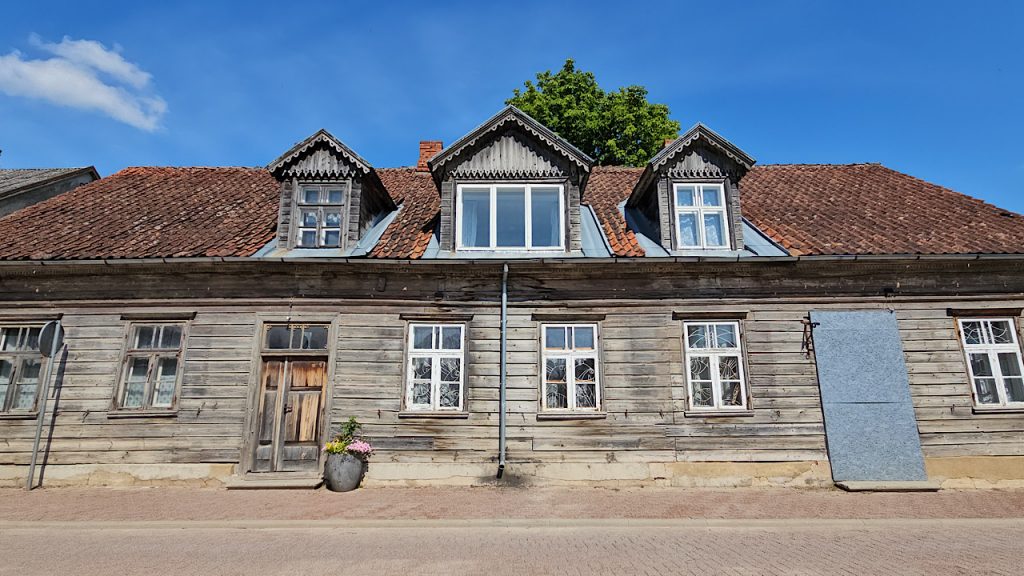
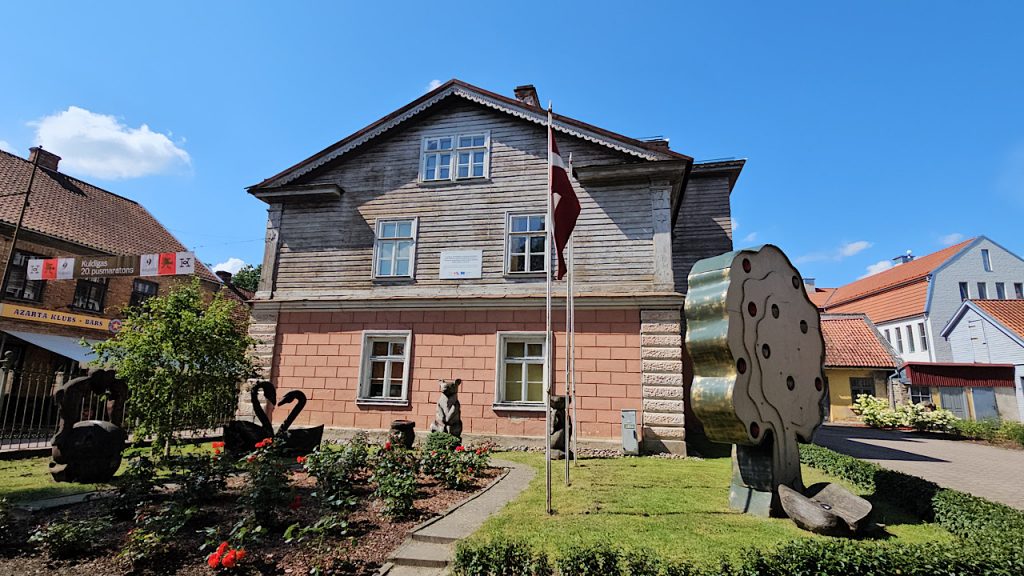
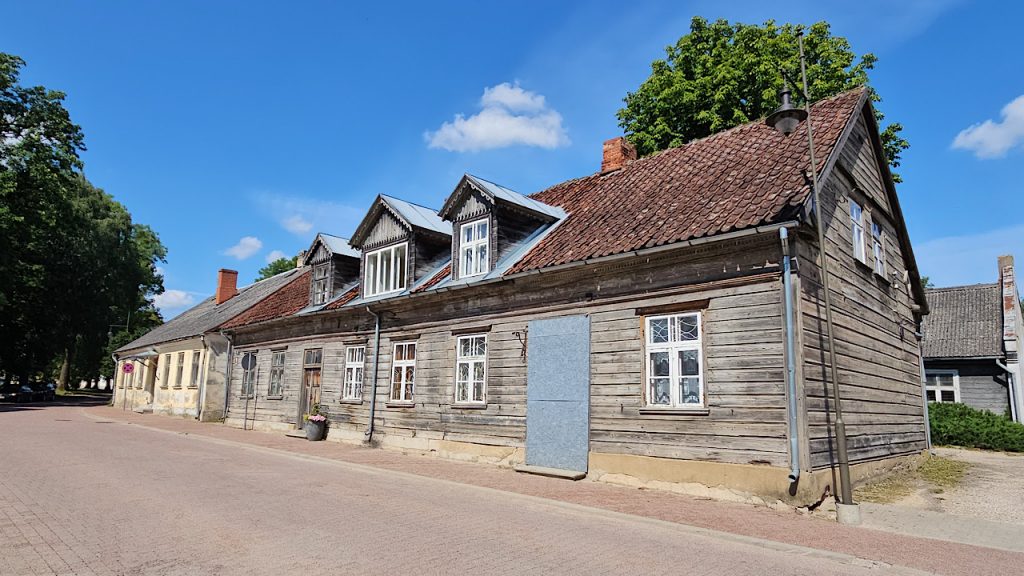
1. Its UNESCO old town
Whilst Kuldīga has its roots back in the 13th century, it is the town’s evolution that has caught the eye of the UNESCO ‘judges’. With influences from many different European architectures, the Old Town oozes a charm that wraps its arms around you like a fleece blanket. From the minute you walk across the brick bridge your eyes are met with a prettiness that is hard to put your finger on. It’s like something out of a fairytale. With cobbled streets leading you every which way, it’s hard to decide which direction to take. The beauty of this town, is that it is pretty compact. But don’t let that fool you into thinking that there’s not much to see. Just branch off down the side streets with fewer people, and you will soon get a peek into Kuldīga’s life; yesterday and today.
With huge buildings filled with wood for their harsh winters and their flaking windows, that on the inside reveal PVC glass, both clearly showing the importance of preserving the authentic legacy from the past. Do not be put off by the tourist train that tootles around the narrow streets. Kuldīga is a tourist hotspot, although not to the denigration of the town’s authenticity.
Walking past the library, which was once a synagogue, gives you a sense of the Jewish plight here. As with other towns across the country, the local Jews here in Kuldīga during that fateful 1941 massacre, were rounded up in the synagogue before being taken into the forest to be mercilessly shot. A similar story that scars the entire Baltic State.
Orthodox style churches tower above the tree lined avenues, and parks bring a freshness to the town. The old Paper Mill, which whilst looks in a sorry state, serves to remind the visitor of Kuldīga’s once thriving past. The Town Garden is actually the oldest part of the town and is the basis of an important project that has brought back the essence of nature and gardening to the town. Landscaped within the grounds of the old Livornian Order Castle it brings a regenerated feel to the town whilst asking you to imagine a time in 1242 when the first foundations were laid for its masterful castle. For 500 years it ruled the roost, decorated with all the royal finery you can imagine. As with many castles in Latvia, its demise came after the Great Northern War in the 1700s, when it was abandoned and finally started to decay.
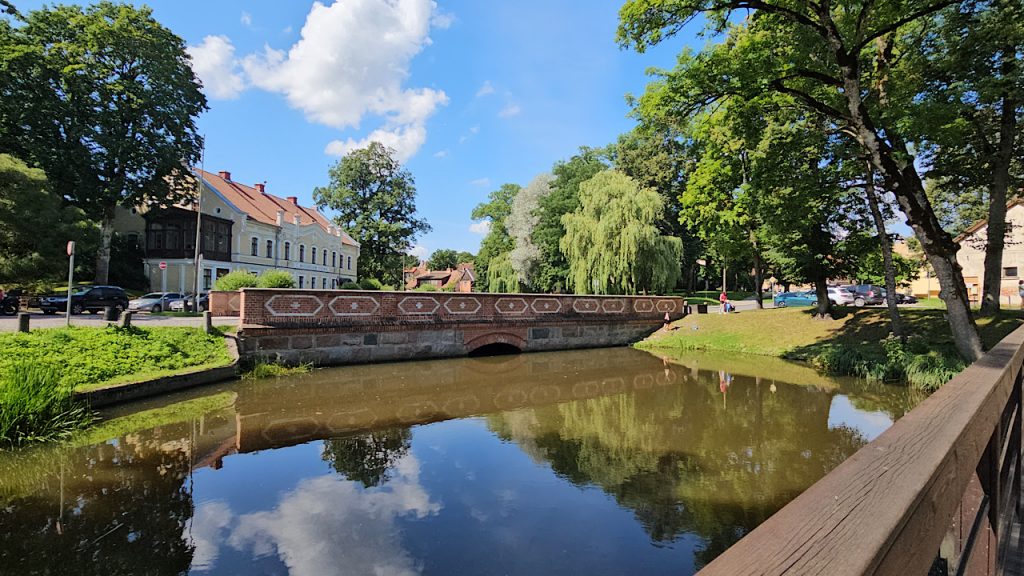
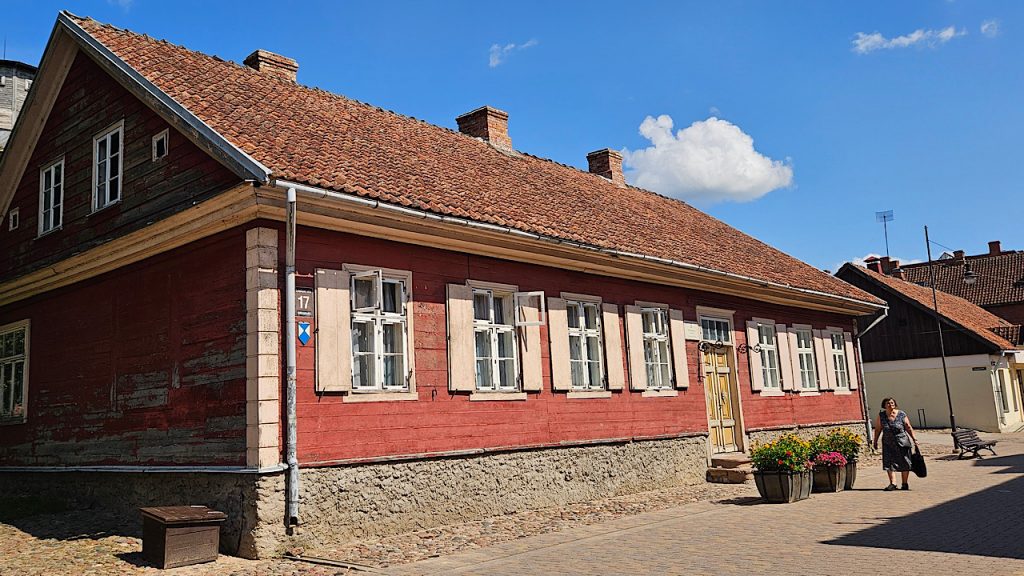
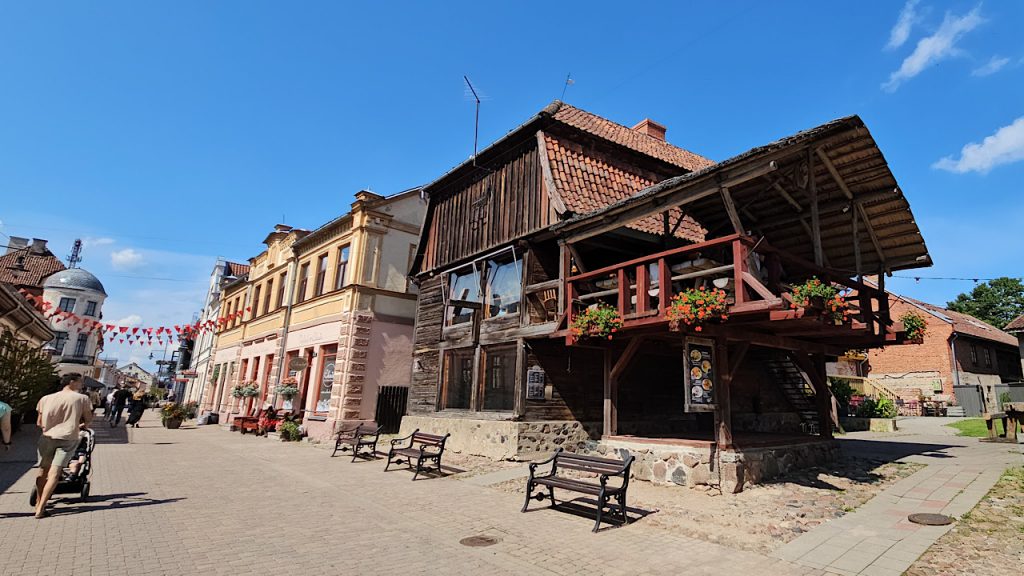
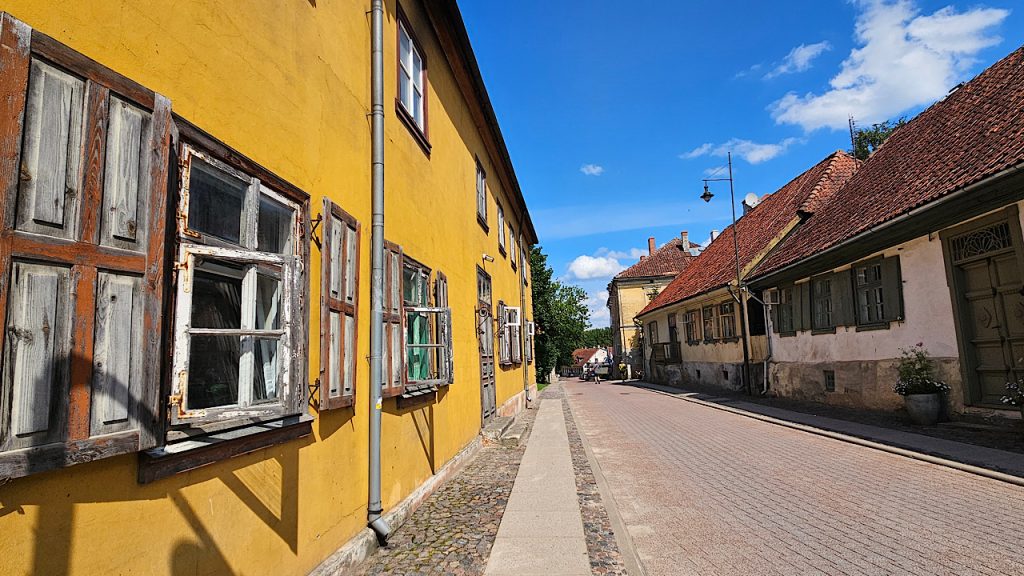
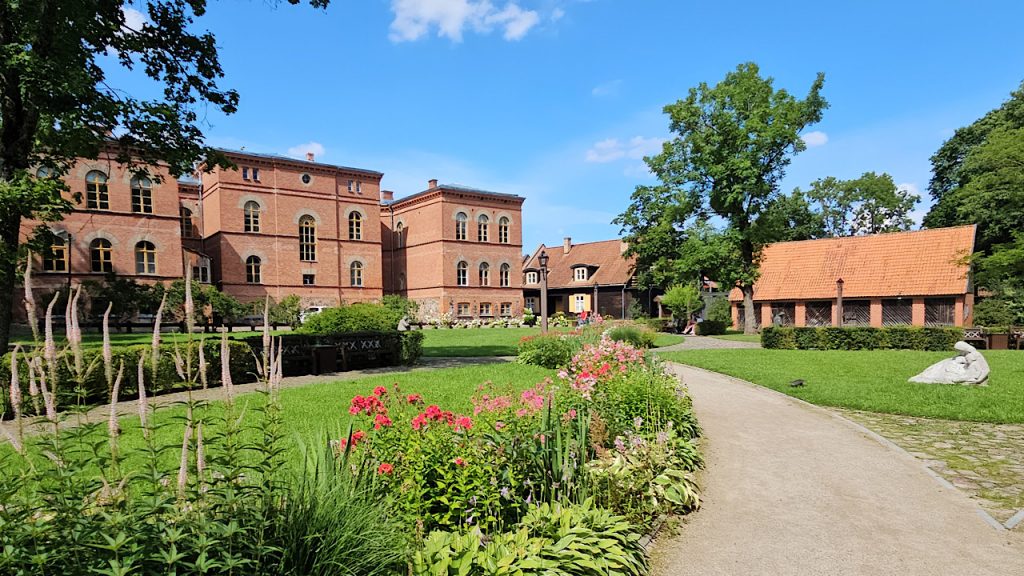
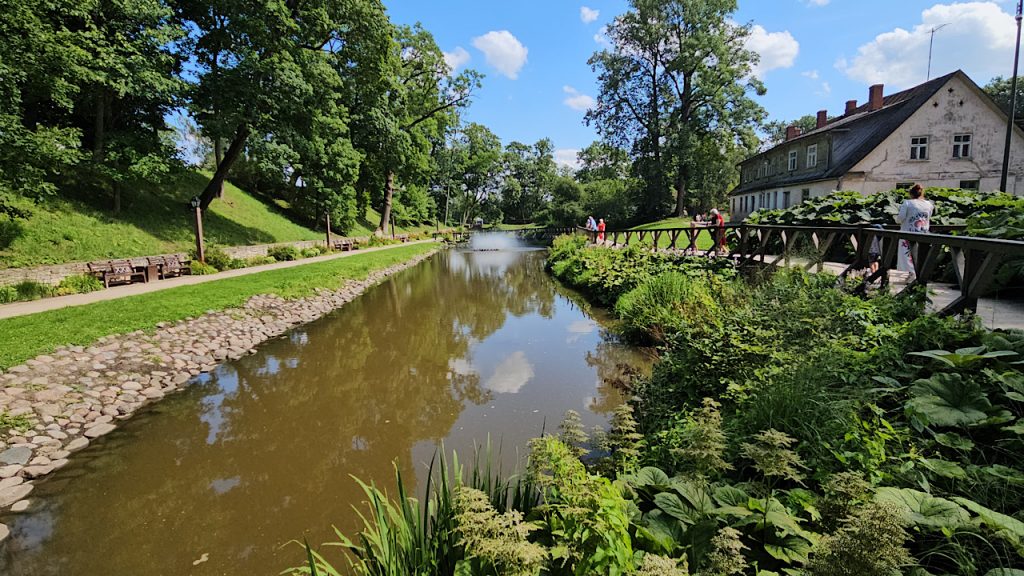
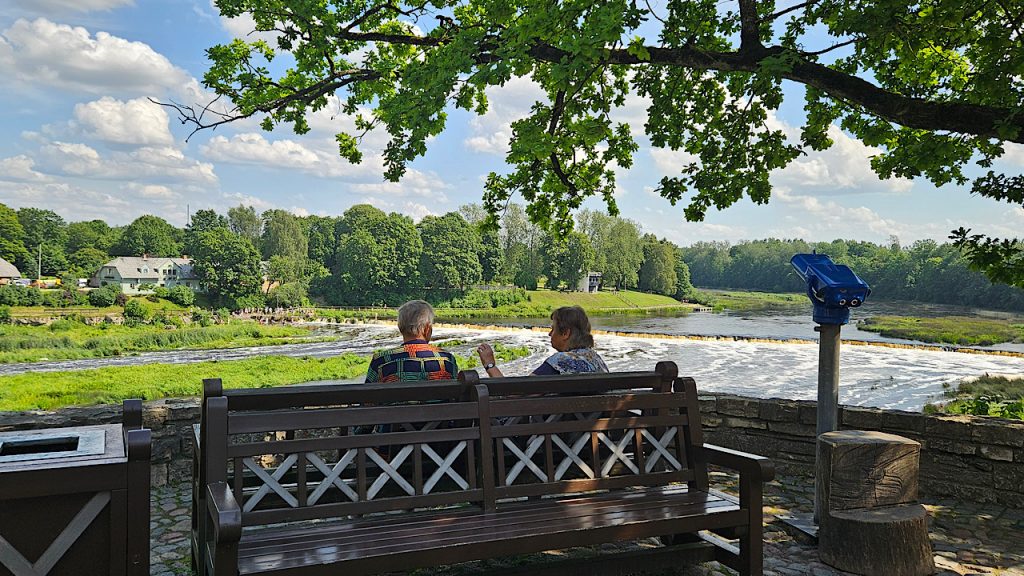
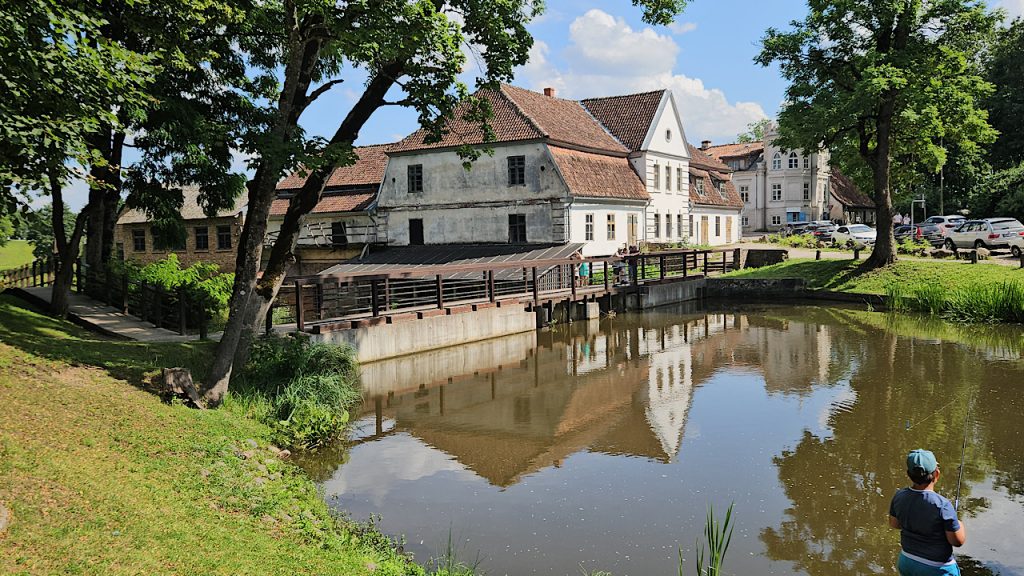
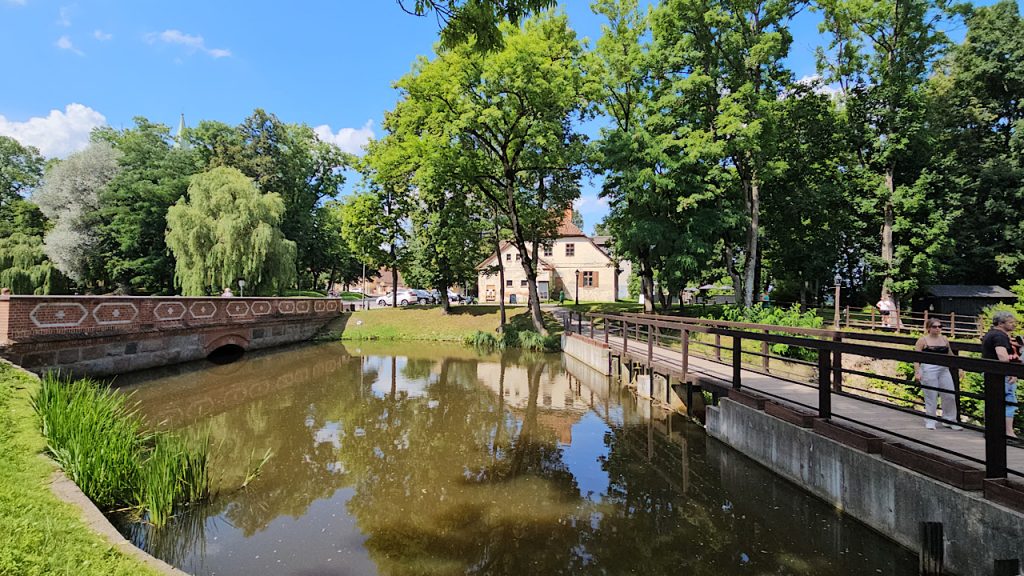
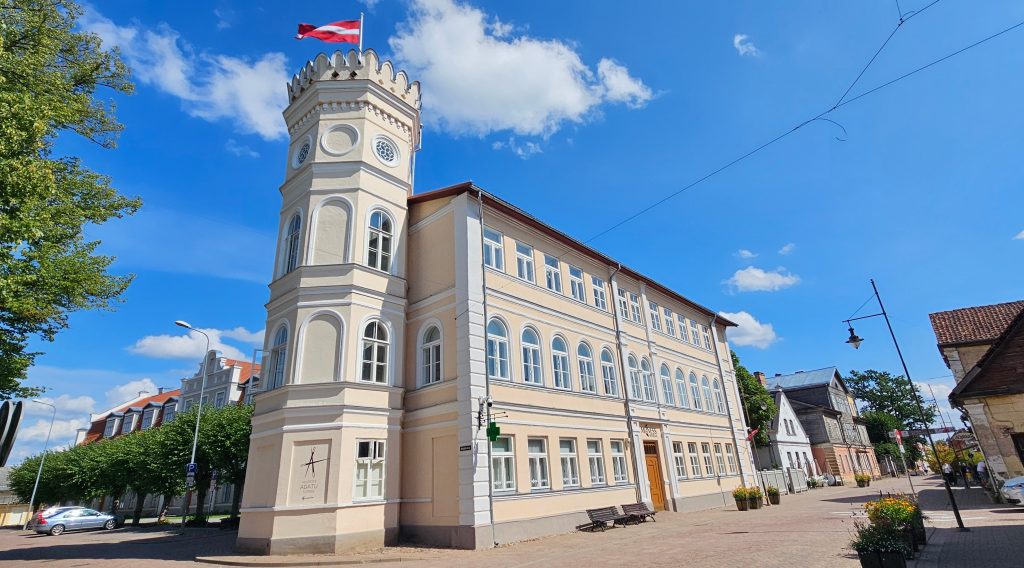
2. Ventas Ramba and the Old Brick Bridge
Bizarrely the more popular reason for visitors to come to Kuldīga is not its Old Town. It is the river and waterfall. Classed as Europe’s widest waterfall, which during floods can reach 270m wide, it is an impressive sight. Not so much because of its height, just purely because of its arcing span across the Venta. Accounts of attempts to make this river navigable are rife across the centuries as Dukes and Tsars attempted to create shipping links to the sea. All attempts failed and the island and canal ravines can still be seen today.
Surely one of the most amazing spectacles must be the Flying Fish phenomenon. In spring and autumn salmon struggle up stream, fighting the full force of the river Venta in order to spawn. Whilst the waterfall itself may not be the challenge at a mere 1.8m, the current of the Venta is mighty.
Ventas Ramba by itself is pretty, yet add to the panorama the dominance of the brick bridge built in 1874. With its unique seven arches supported by six pillars it is reminiscent of Roman designs, and is one of the longest in Europe. The lanterns placed along the bridge are the originals and are adorned with fishes as a symbol of the abundance that this river carries.
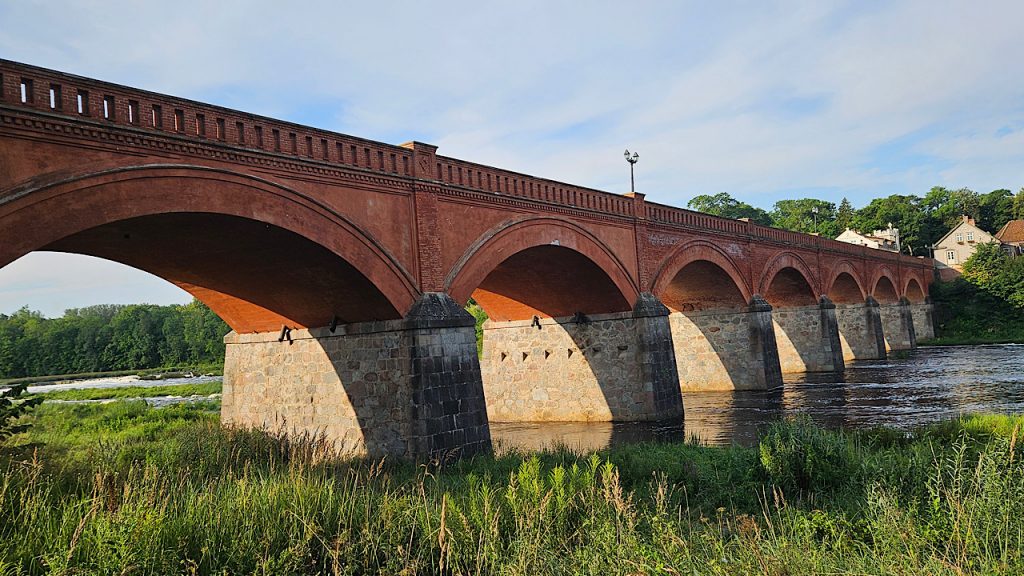
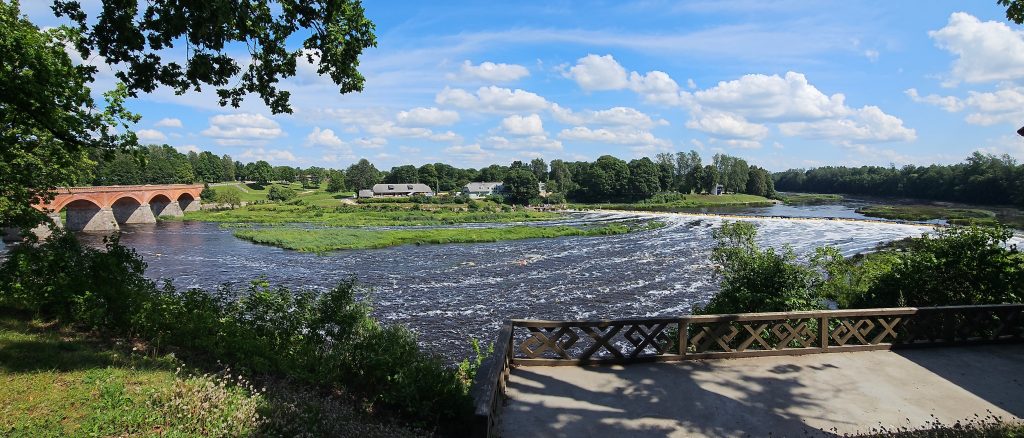
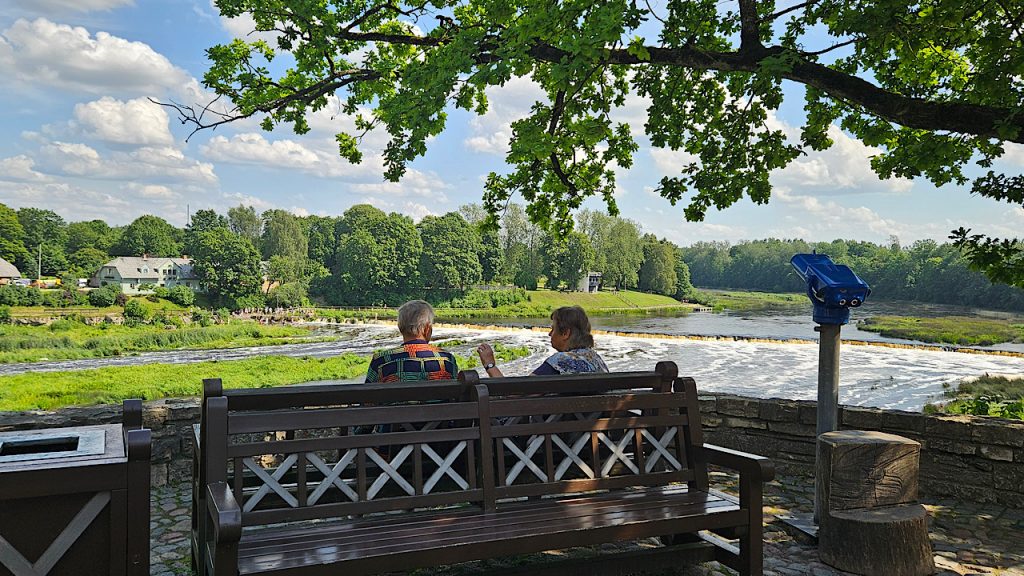
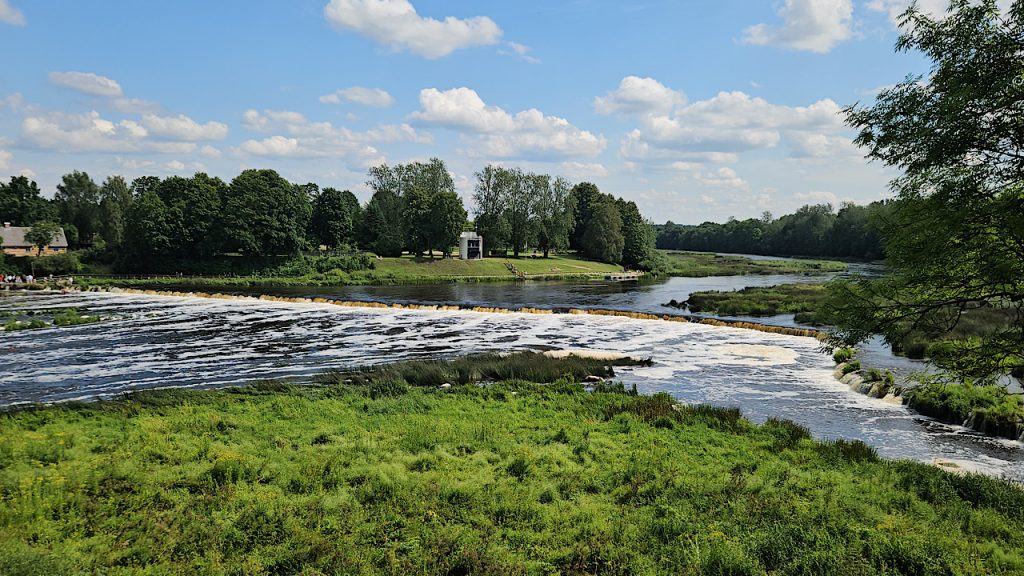
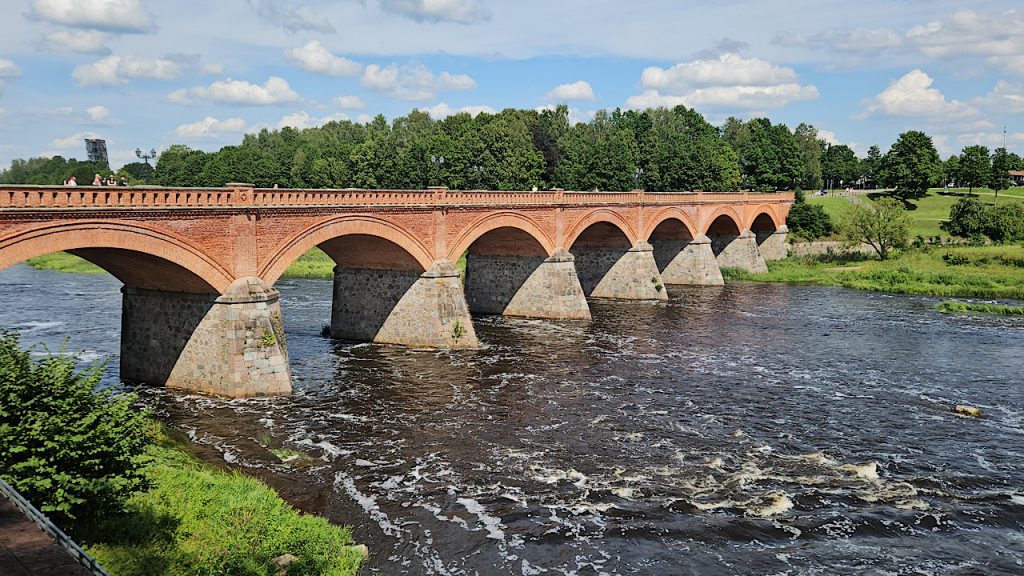
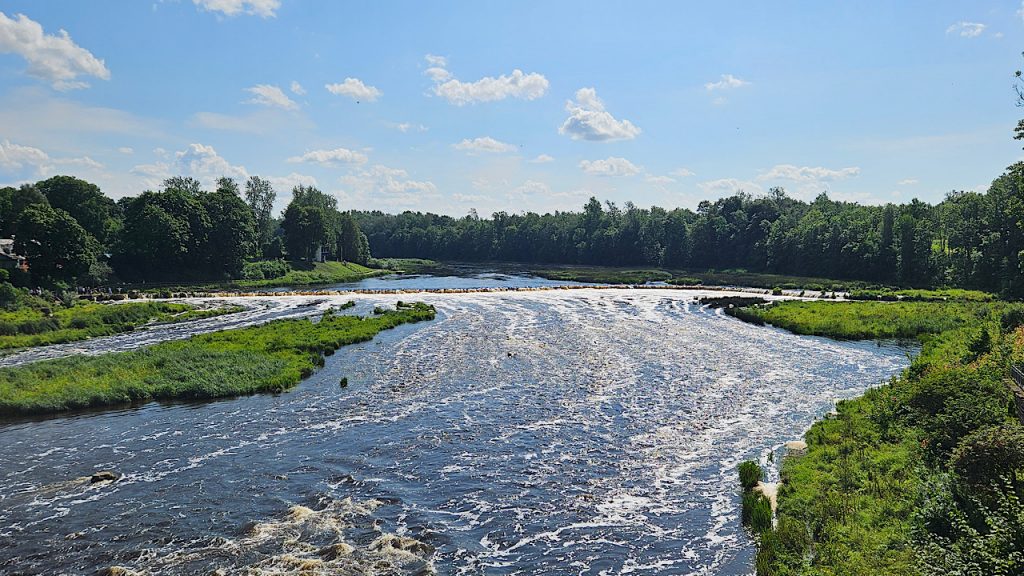
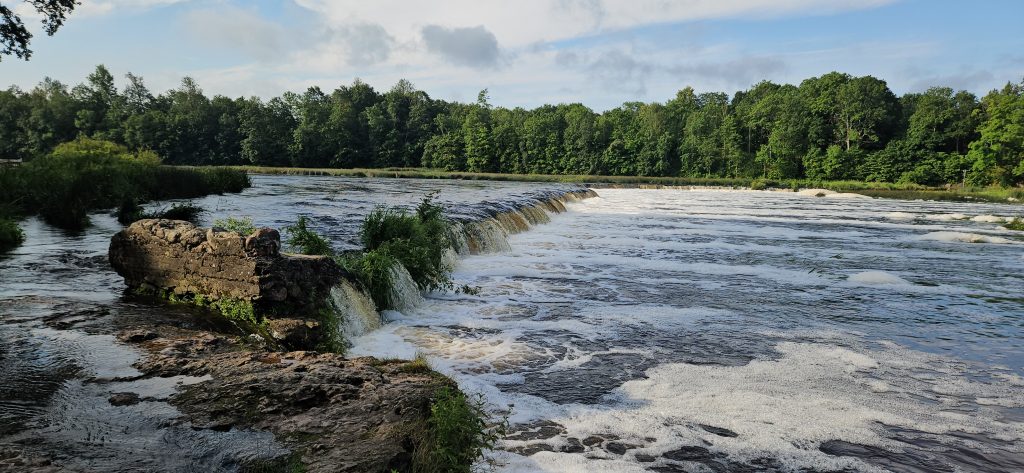
3. The Kuldīga Observation Tower
No visit to this magical town is complete without an aerial view. Of course this gives a totally different perspective of the river, the UNESCO town and the far reaching forests beyond. Opening in February 2024, the Observation Tower is located on the right bank of the Venta, just a short walking distance from the parking for the waterfall. There’s a lovely forest walk that takes you there hiding the truth that the tower will soon to reveal.
The leaning tower is over a 20m climb, with 100 steps. Yes I counted them, twice! It feels incredibly safe despite its obvious lean and the views from the top are amazing. The best time to go is in the morning when the sun is behind you and the trees, lighting up the town churches and bridge in front of you. It is from here that you get the full picture of this river’s power as it courses its way through the valley. It is a lovely way to end your memorable trip to Kuldīga, if of course you are not plagued by a fear of heights. It is not a climb for the feint hearted. Needless to say I did the climb alone!
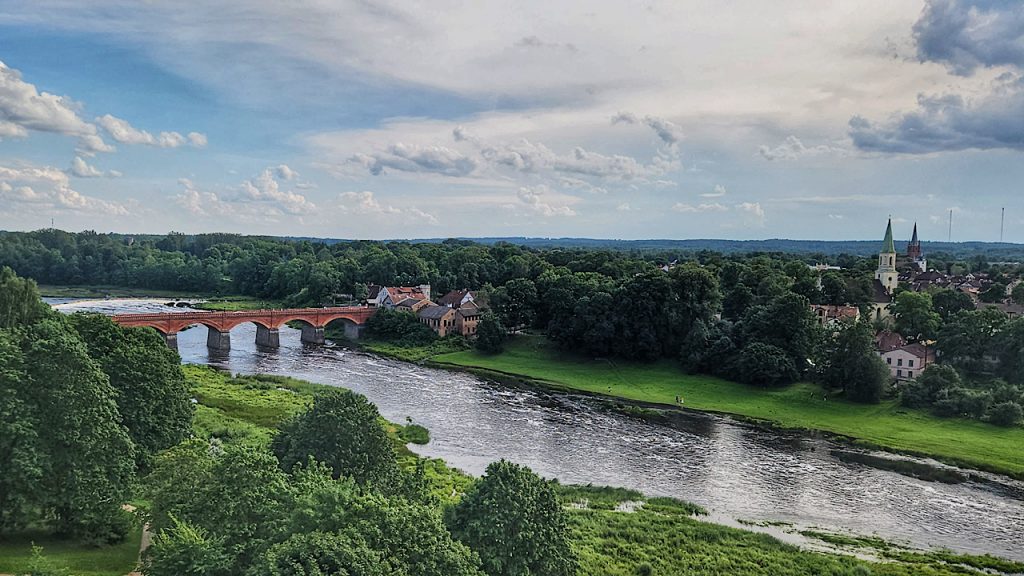
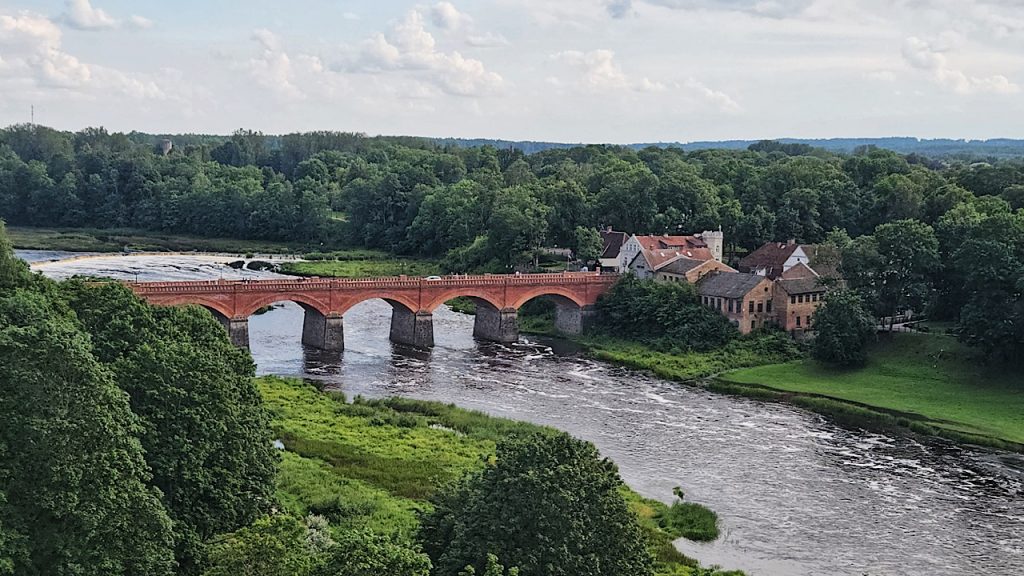
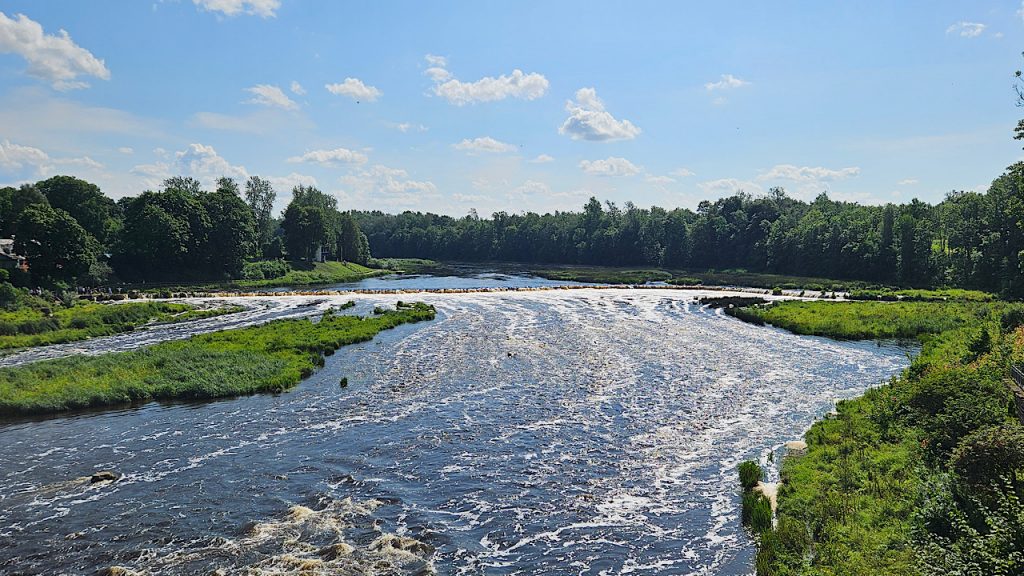
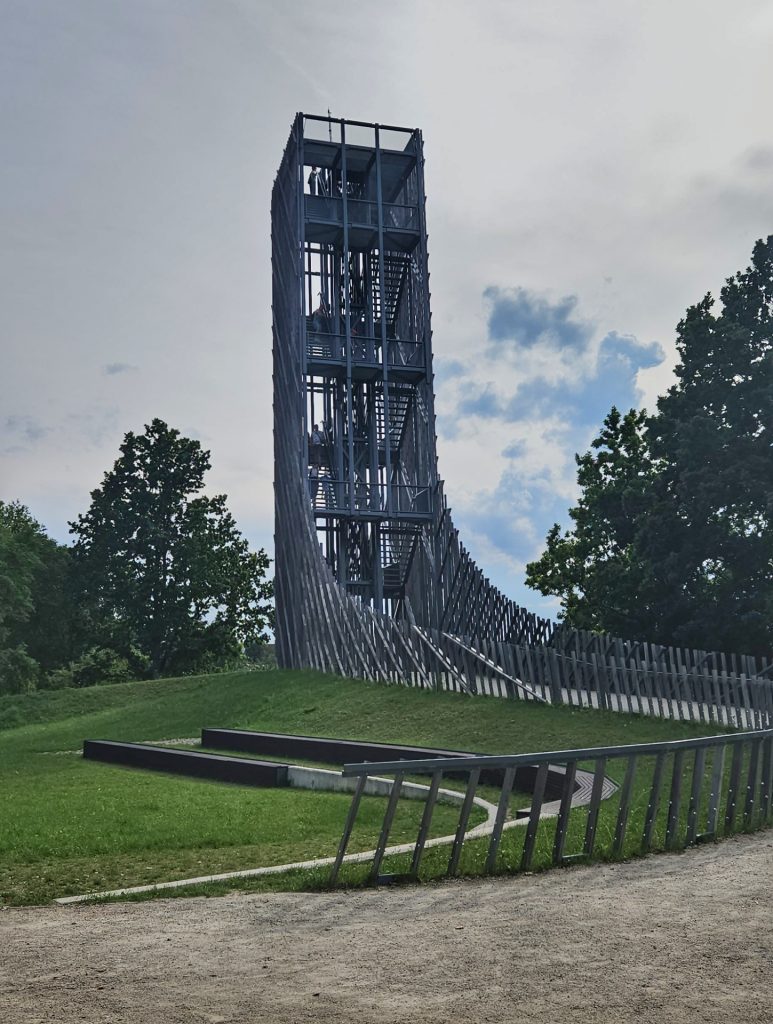
If you are coming to Kuldīga in your motorhome there are plenty of places to stay. Theirs is just one paid camping option at the Venta Ramba guest house which charges 40€ for the night which includes sauna, services and WiFi. Or you can avail of a couple of freebies which are across the road from the Waterfall parking. We parked here without issue overnight, although during the day it was very busy. Be careful though not to park too far onto the grass as it gets wet and you may get stuck. There are other parking areas further down the road closer to the Observation Tower. So you have plenty of options if you don’t mind being off grid.
Latvia and Estonia are a delight in all that they offer you for a Baltic Trio road trip. Don’t forget to keep checking for updates as our travels take us further.
For a more intimate look at Kuldīga, check out our video here.

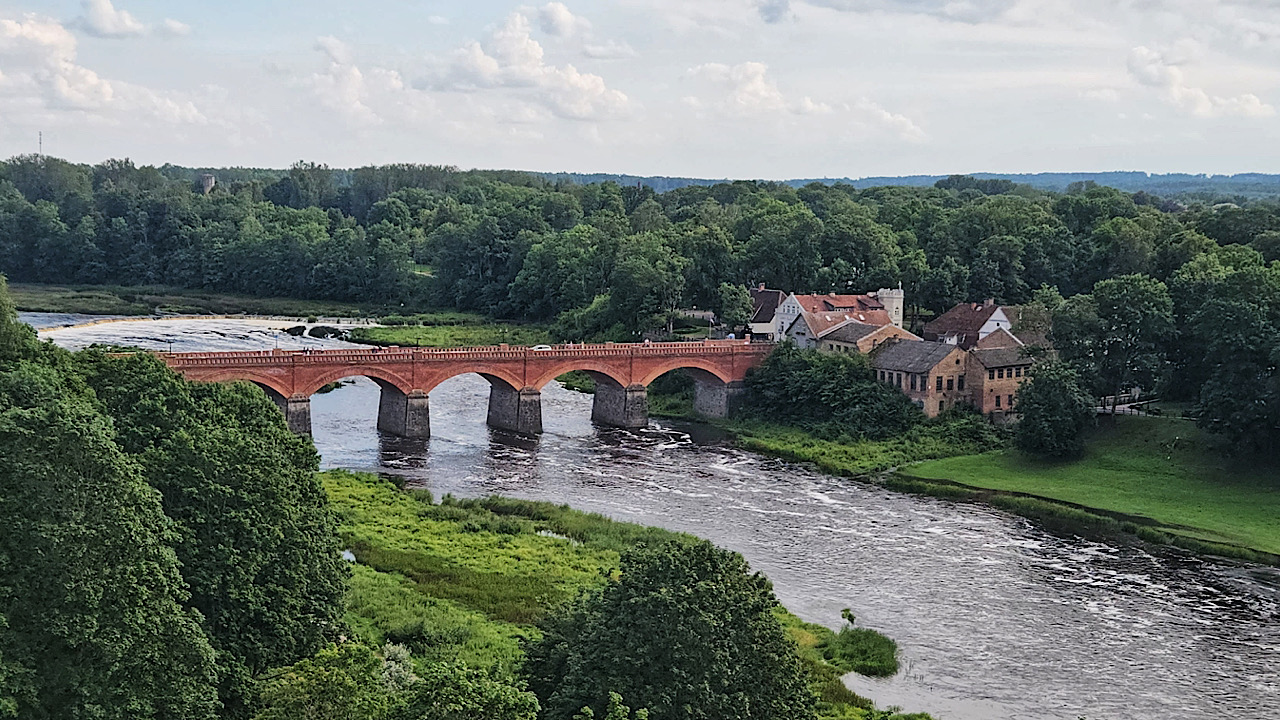
0 Comments